
Our exploration of Tenerife’s northern coast began with a visit to the lovely town of Garachico. Established in the late 15th century by Genoese banker Cristóbal de Ponte, Garachico swiftly became one of the island’s most prosperous ports, bustling with trade between the Americas and Europe.
The town’s fortunes dramatically shifted in 1706 when the Trevejo volcano erupted, burying much of Garachico under lava. Resiliently, the town was rebuilt on the solidified lava flow, retaining its historic charm and architectural beauty.
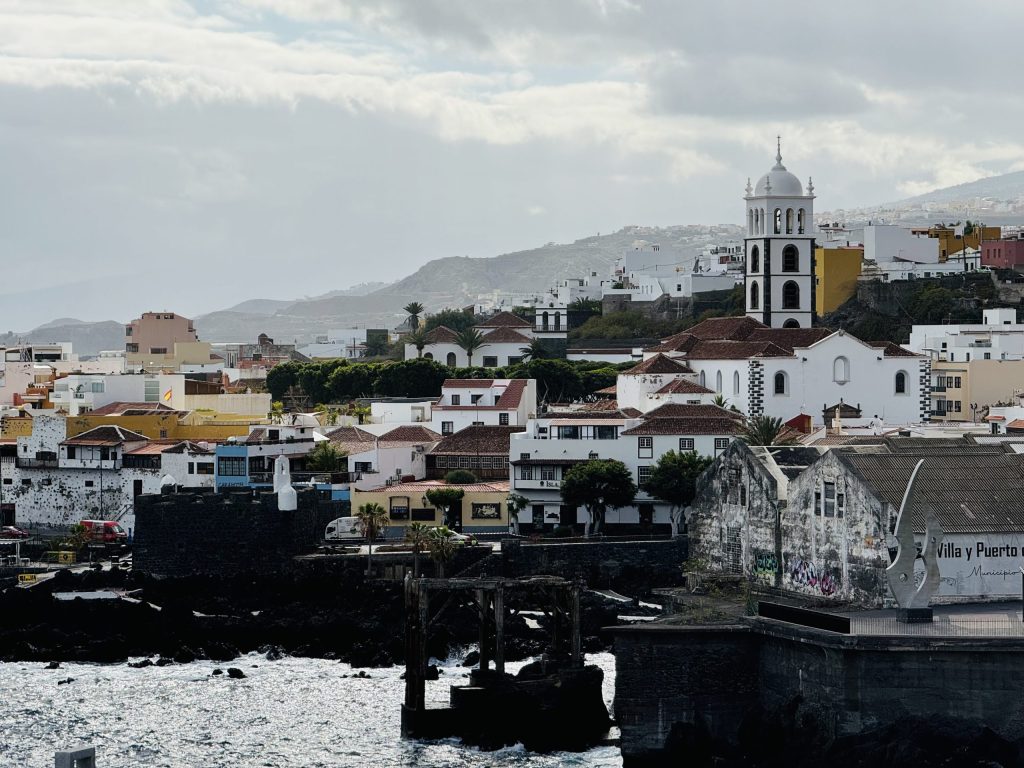
Overview of Garachico
Today, Garachico is known for its cobbled streets, historic buildings, and natural lava pools – where we also took a brief tour of Hotel San Roque, one of the town’s few boutique accommodations.
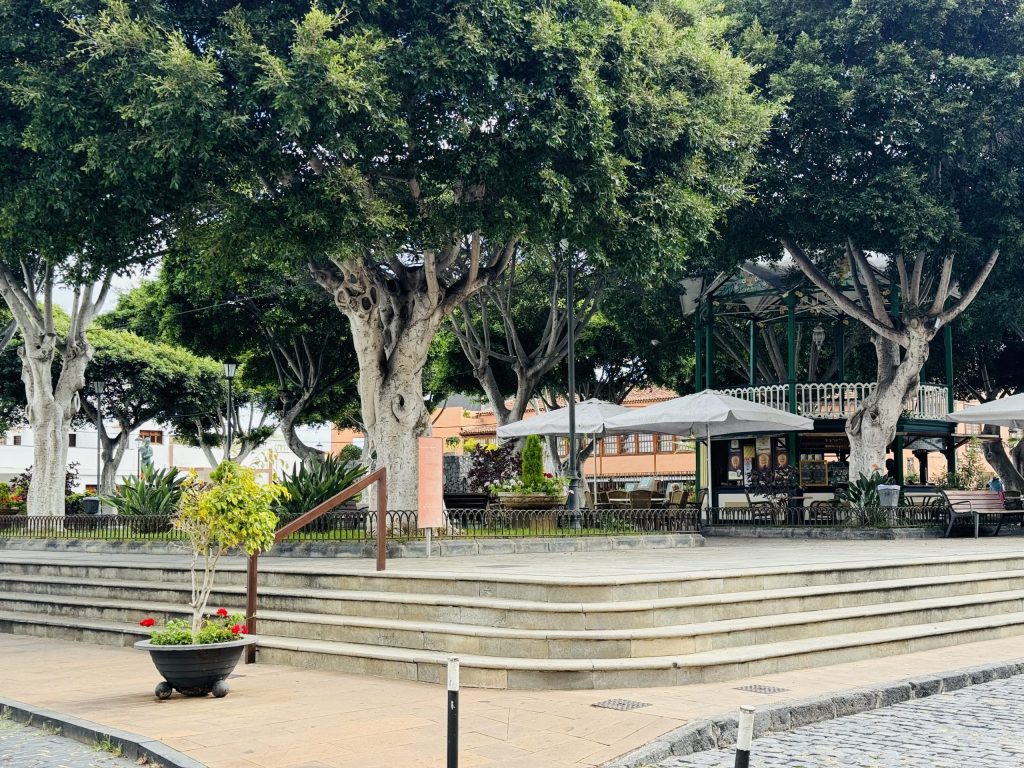
Garachico, Tenerife
Continuing along the coast, we arrived at Icod de los Vinos, a town that exudes traditional charm with its picturesque streets, historic architecture, and lush vineyards. The town’s most iconic landmark is the ancient Dragon Tree, or Drago Milenario, believed to be over a thousand years old. This magnificent tree, with its gnarled trunk and umbrella-like canopy, stands proudly in Drago Park and has been a cultural and spiritual symbol for centuries, revered by the indigenous Guanches and later cherished by locals and visitors alike.
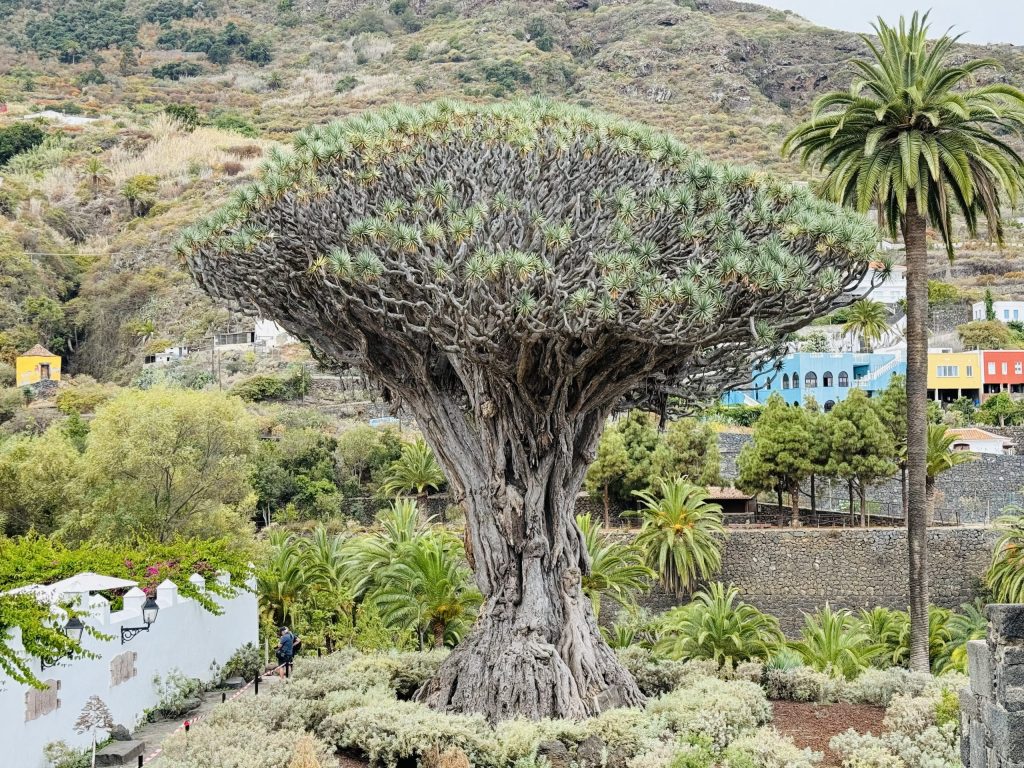
Dragon Tree, Icod de los Vinos
In Icod, we also visited the Malmsey Wine Museum. Malmsey, or Malvasia wine, has roots tracing back to the 15th century when Portuguese settlers introduced the grape variety to Tenerife’s fertile volcanic soil. By the 16th century, Malmsey had become a prized export, a favourite in European courts and even referenced by Shakespeare. The museum provided a fascinating insight into the wine’s rich history and its enduring legacy, where they do tasting of their many varieties.
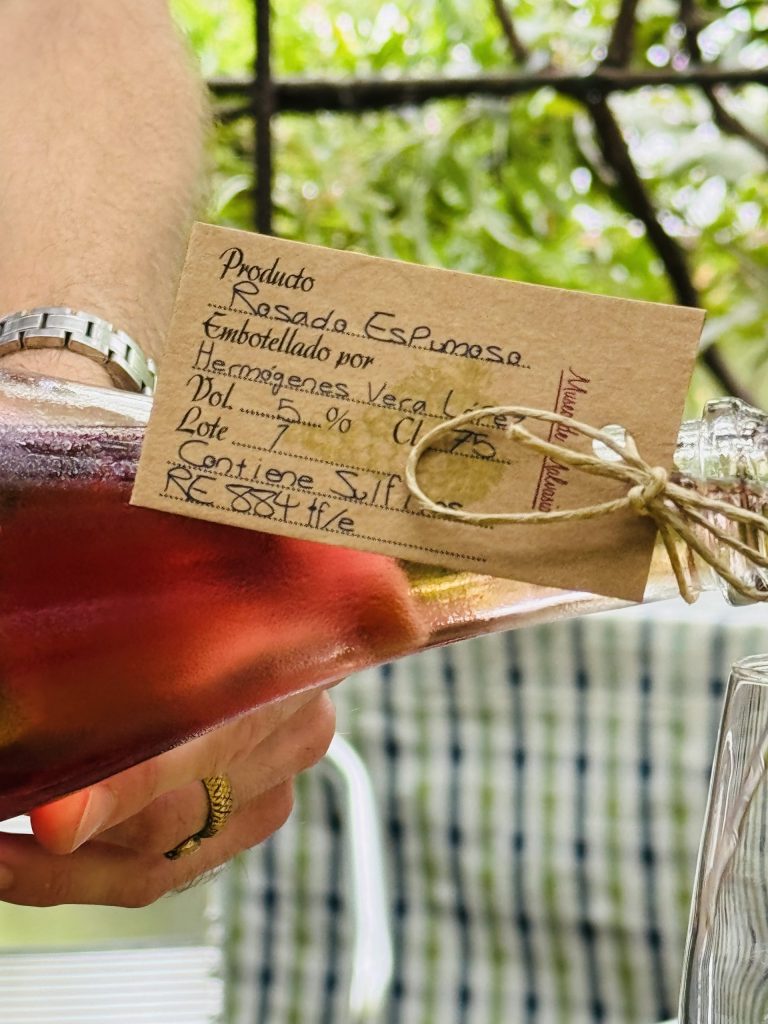
Museo de Malvasia
For lunch, we visited Casa del Vino La Baranda, a 17th-century estate that is a haven for wine enthusiasts. We enjoyed a delightful meal with stunning views of the Atlantic Ocean and Mount Teide, immersing ourselves in the estate’s serene ambience.
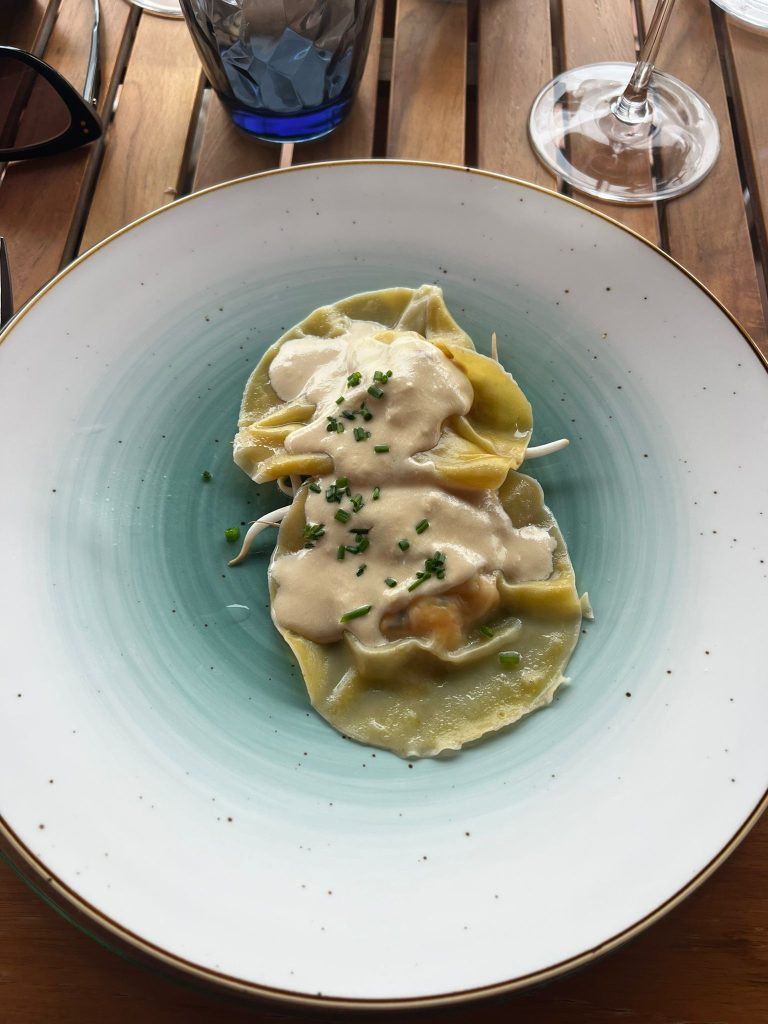
Prawn Ravioli at ‘House of Wine’
After some relaxation at our hotel, including a refreshing dip in the spa pool, we headed to the historic town of La Orotava. Founded during the Spanish conquest in the late 15th century, La Orotava quickly became a vital agricultural centre, famed for its sugar cane and vineyards. The town is renowned for its well-preserved colonial architecture, including grand mansions, churches, and convents adorned with intricate wooden balconies. Its historic centre is a cultural treasure, especially vibrant during the Corpus Christi festival when elaborate sand and flower carpets decorate the streets.
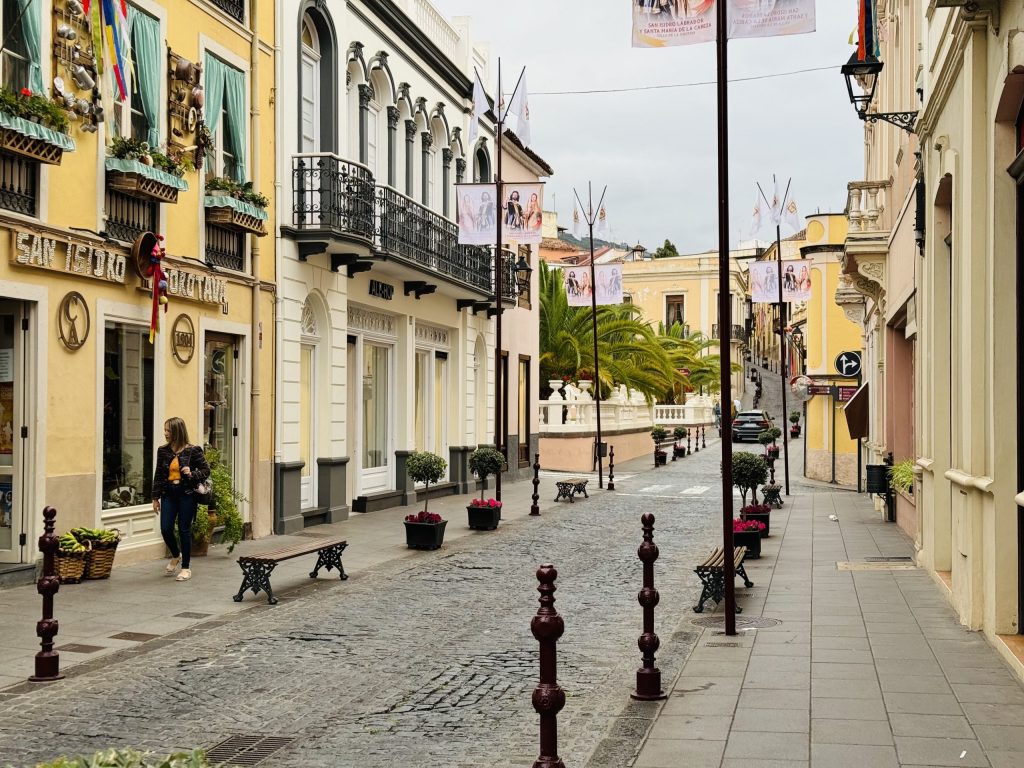
La Orotava, Tenerife
For dinner, we ventured into Puerto de la Cruz, one of Tenerife’s oldest towns, dating back to the early 16th century. Originally a modest fishing village, it grew into the island’s primary port by the 17th century, exporting Malvasia wine and local produce. In the 19th century, Puerto de la Cruz evolved into a premier health and wellness destination, attracting European visitors with its mild climate and therapeutic sea air. Today, it is known for its colonial architecture, lush botanical gardens, and the iconic Lago Martiánez, a complex of seawater pools designed by the renowned architect César Manrique.
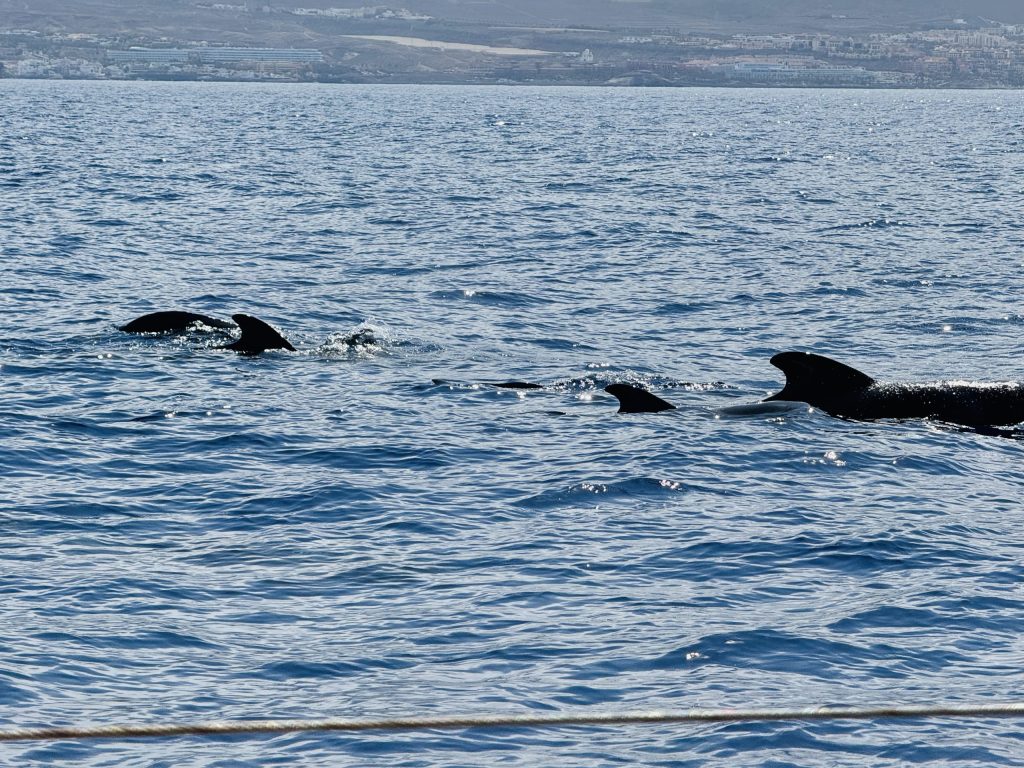
Whale Watching near Costa Adeje
As we headed back to the airport, we headed to Puerto Colon, near the upmarket resort of Costa Adele for a Whale and Dolphin trip aboard our own catamaran. It’s one of the only times I have ever been on a trip like this where I have actually seen both, usually I have only seen Dolphins. Tenerife is renowned for its commitment to dolphin and whale preservation, with its waters being one of the best places in Europe for observing these majestic marine mammals in their natural habitat. The island’s southwest coast, particularly around the Teno-Rasca Marine Strip, is a designated Special Area of Conservation, providing a safe haven for around 21 species, including bottlenose dolphins and pilot whales. It was followed by lunch at Besame Mucho, a restaurant overlooking the beach at Playa de las America with some really good, fresh food.
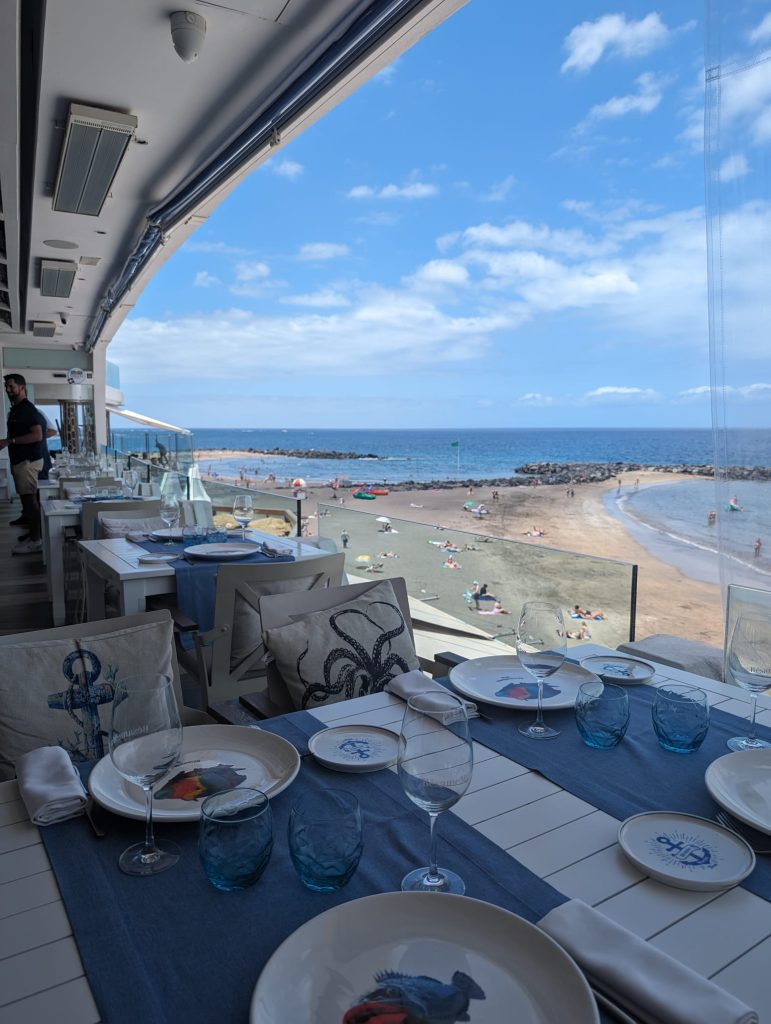
Bésame Mucho, Playa de Las Americas




